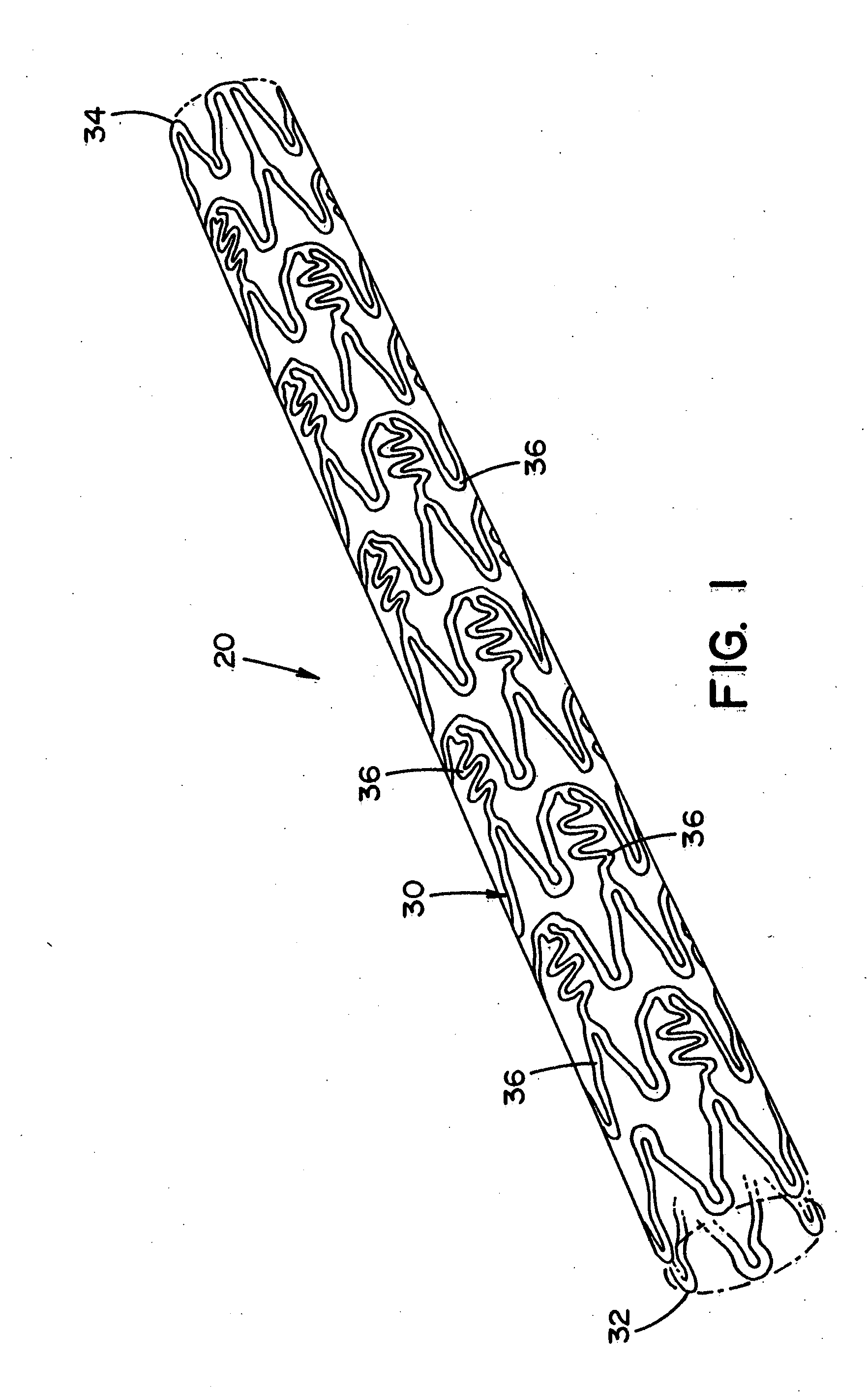Polymer biodegradable medical device
a biodegradable, medical device technology, applied in the direction of prosthesis, surgery, blood vessels, etc., can solve the problems of one or more fatigued portions of the stent to eventually fatigue, one or more fatigued portions of the stent can fracture and/or become dislodged from the stent, etc., to facilitate the thrombosis of the stent, inhibit or prevent thrombosis, and improve the procedural outcome of the patien
- Summary
- Abstract
- Description
- Claims
- Application Information
AI Technical Summary
Benefits of technology
Problems solved by technology
Method used
Image
Examples
Embodiment Construction
[0062] Referring now to the drawings wherein the showings are for the purpose of illustrating embodiments of the invention only and not for the purpose of limiting the same, FIGS. 1-24 disclose a medical device in the form of a stent for use in a body passageway. The stent of the present invention can be at least partially formed of a biodegradeable polymer. The stent of the present invention can at least partially dissolve in the body and / or be absorbed by the body. For instance, the stent can be designed to be insertable in a diseased area in a body passageway and be expanded in the diseased area. Once the stent has at least partially achieved its function, the stent can begin or become completely dissolved in and / or is absorbed by the body naturally and / or in response to one or more events so that the body passageway is at least partially free of the stent. By at least partially removing the stent from the body passageway, problems such as, but not limited to, thrombosis, in-sten...
PUM
| Property | Measurement | Unit |
|---|---|---|
| thickness | aaaaa | aaaaa |
| thickness | aaaaa | aaaaa |
| thickness | aaaaa | aaaaa |
Abstract
Description
Claims
Application Information
 Login to View More
Login to View More - R&D
- Intellectual Property
- Life Sciences
- Materials
- Tech Scout
- Unparalleled Data Quality
- Higher Quality Content
- 60% Fewer Hallucinations
Browse by: Latest US Patents, China's latest patents, Technical Efficacy Thesaurus, Application Domain, Technology Topic, Popular Technical Reports.
© 2025 PatSnap. All rights reserved.Legal|Privacy policy|Modern Slavery Act Transparency Statement|Sitemap|About US| Contact US: help@patsnap.com



